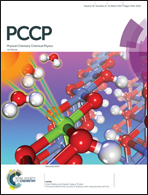Metal diffusion barriers for GaAs solar cells
Abstract
In this study accelerated ageing testing (AAT), J–V characterization and TEM imaging in combination with phase diagram data from literature are used to assess the potential of Ti, Ni, Pd and Pt as diffusion barriers for Au/Cu-based metallization of III–V solar cells. Ni barriers show the largest potential as at an AAT temperature of 250 °C both cells with 10 and 100 nm thick Ni barriers show significantly better performance compared to Au/Cu cells, with the cells with 10 nm Ni barriers even showing virtually no degradation after 7.5 days at 250 °C (equivalent to 10 years at 100 °C at an Ea of 0.70 eV). Detailed investigation shows that Ni does not act as a barrier in the classical sense, i.e. preventing diffusion of Cu and Au across the barrier. Instead Ni modifies or slows down the interactions taking place during device degradation and thus effectively acts as an 'interaction' barrier. Different interactions occur at temperatures below and above 250 °C and for thin (10 nm) and thick (100 nm) barriers. The results of this study indicate that 10–100 nm thick Ni intermediate layers in the Cu/Au based metallization of III–V solar cells may be beneficial to improve the device stability upon exposure to elevated temperatures.



 Please wait while we load your content...
Please wait while we load your content...